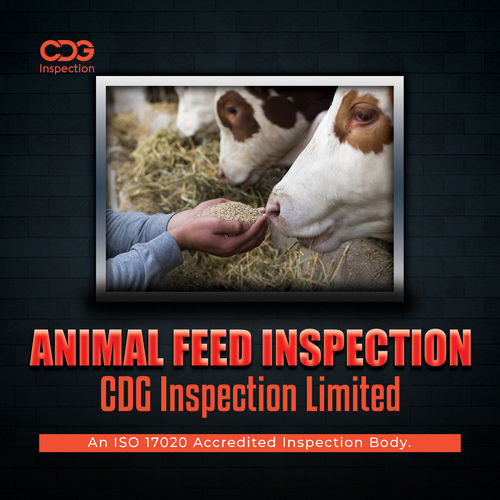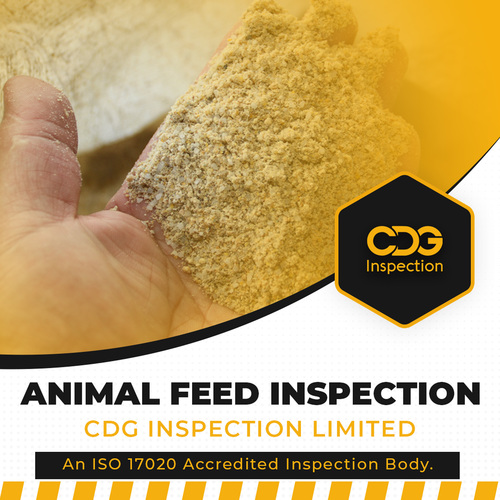Animal Feed Inspection Services in Kolkata
Product Details:
X
Product Description
CIL Provides Accredited Animal Feed Inspection Services in Kolkata, West Bengal, India.Animal feed plays an important part in the food chain andthe composition and quality of the livestock products (milk, meat and eggs)that people consume. Animal feeds are either classified as fodder, forage, or mixedfeeds. Fodders could be classified as roughages (fresh cut forage, hay or dryforage, straw, root crops, stover and silage) and concentrates such as grains,legumes and by products of processing. Safety is perhaps one of the mostimportant reasons for feed analysis by the manufacturers and consumers. Storageduration and conditions for feed samples, as well as of stable and unstableparameters are important in sample preparation. A number of sub samples forpreparing final sample for various categories of feed products are recommended.Some analysis conducted on feed include, dry matter, crude ash, ash insolublein acid (sand), crude protein, crude fat, fibre analysis, starch, gross energy,minerals. More are amino acids (excluding tryptophan), amino acids(tryptophan), fatty acids, vitamins, reducing sugar, mycotoxins, andpesticides. Various types of samples depending on their purposes and uses areavailable from check, standard, working and referee samples to composite types.Sampling errors in procedures exists and can be minimized by standards orpurposes of the analysis, appropriate sampling equipment and using the rightquantity of materials. Animal feed plays an important part in the food chainand the composition and quality of the livestock products (milk, meat and eggs)that people consume. Animal feeds are either classified as fodder, forage, ormixed feeds. Fodders could be classified as roughages (fresh cut forage, hay ordry forage, straw, root crops, stover and silage) and concentrates such asgrains, legumes and by products of processing. Safety is perhaps one of themost important reasons for feed analysis by the manufacturers and consumers.Storage duration and conditions for feed samples, as well as of stable andunstable parameters are important in sample preparation. A number of sub samplesfor preparing final sample for various categories of feed products arerecommended. Some analysis conducted on feed include, dry matter, crude ash,ash insoluble in acid (sand), crude protein, crude fat, fibre analysis, starch,gross energy, minerals. More are amino acids (excluding tryptophan), aminoacids (tryptophan), fatty acids, vitamins, reducing sugar, mycotoxins, andpesticides. Various types of samples depending on their purposes and uses areavailable from check, standard, working and referee samples to composite types.Sampling errors in procedures exists and can be minimized by standards orpurposes of the analysis, appropriate sampling equipment and using the rightquantity of materials. Food is any substance, originating from plants, animalor any other source, consumed by any organism for the purpose of providingnutritional support. When consumed and assimilated, food is used in the body tomaintain and repair body tissues, promote health and growth, sustain life,provide energy, for reproduction and other vital body processes through therelease of its nutrients. Essentially, the basic nutritive components of foodare carbohydrates, proteins, fats, minerals, vitamins and water, which areabsorbed in the body in various usable forms. Food given to food producinganimals, whether made up of single or multiple materials, are generallyreferred to as feed or feedstuff, and could be fed as raw, semi processed orprocessed. Feeds may be live organisms, particularly in the production ofaquatic organisms. Animal feeds are either classified as fodder, forage, ormixed feeds. Fodders could be classified as roughages (fresh cut forage, hay ordry forage, straw, root crops, stover and silage) and concentrates such asgrains, legumes and by products of processing. Plant materials consumed bygrazing animals either directly as pasture, crop residue, and immature cerealcrops are referred to as forage. However, forage materials cut as fodder,particularly fresh, hay, and silage are sometimes loosely referred to asforage. Mixed feeds are produced from several feed ingredients combined indifferent proportions to achieve a particular nutritional quality. Feedingredients, including additives, may or may not add any nutritional value tothe mixed feed and comprises of components originating from plant, animal, oraquatic sources, which could be organic or inorganic in nature . Severalingredients used for the production of feedstuff are limiting in one or morenutrients, and must therefore be blended in appropriate proportions to meet thenutritional requirements of the animals. Mixed feeds are usually produced inthe form of mash or pellets.
Tell us about your requirement

Price:
Quantity
Select Unit
- 50
- 100
- 200
- 250
- 500
- 1000+
Additional detail
Mobile number
Email








